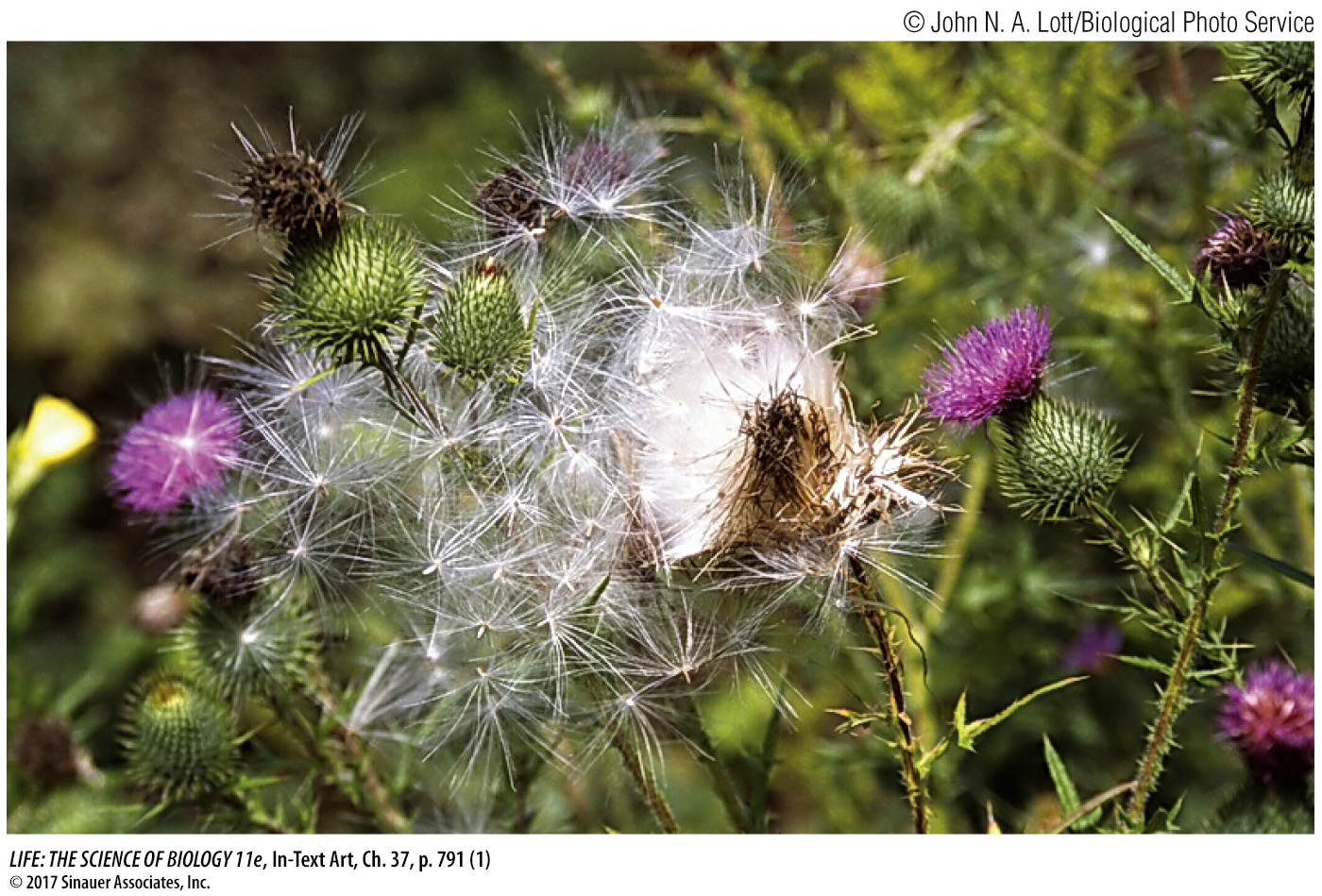Embryos develop within seeds contained in fruits
Fertilization initiates the highly coordinated growth and development of the embryo, endosperm, integuments, and carpel. The integuments—
In Chapter 36 you learned about the events in plant embryonic development and its hormonal control. As seeds develop, they prepare for dispersal and dormancy by losing up to 95 percent of their water content. You can see this desiccation by comparing corn grains (e.g., popcorn) with ripe corn from the cob. A dry seed is still alive; it has protective proteins that keep its cells in a living state.
In angiosperms, the ovary—
They aid in seed dispersal.
They protect the seed from damage by animals and infection by microbial pathogens.
A fruit may consist of only the mature ovary and seeds, or it may include other parts of the flower. Some species produce fleshy, edible fruits, such as peaches and tomatoes, whereas the fruits of other species are dry (Figure 37.6).

The diverse forms of fruits reflect the varied strategies plants use to disperse their progeny. Because plants cannot move, their progeny need some mechanism for separating themselves from their parents. Wide dispersal of progeny may not always be advantageous, however. If a plant has successfully grown and reproduced, its location is likely to be favorable for the next generation too. Some offspring do indeed stay near their parents. This is the case in many tree species, whose seeds simply fall to the ground. However, this strategy has several potential disadvantages. If the species is a perennial, the offspring that germinate near their parents will be competing with their parents for resources, which may be too limited to support a dense population. Furthermore, even though local conditions were good enough for the parent to produce at least some seeds, there is no guarantee that conditions will still be good the next year, or that they won’t be better elsewhere. Thus in many cases seed dispersal is vital to a species’ survival.
Many fruits help disperse seeds over substantial distances, increasing the probability that at least a few of the seeds will find suitable conditions for germination and growth to sexual maturity. Some wind-

Other fruits, such as these burs, attach themselves to animals (or to your clothes and shoes):

792
Water disperses some fruits; coconuts have been known to float thousands of miles between islands. Seeds swallowed whole by an animal along with fruits such as berries travel through the animal’s digestive tract and are deposited some distance from the parent plant.
Biologists are beginning to understand the relationships between seed development (from ovules) and fruit development (from carpels). Some seedless fruits, such as varieties of watermelons and grapes, develop when fertilization occurs, but the embryo then aborts. In other cases, such as bananas, the fruit develops without fertilization. In most cases, however, fruit development does not occur in the absence of fertilization. Several years ago a farmer in Spain who grows sugar apples (Annona squamosa) noticed a seedless fruit and brought it to the attention of scientists. A single gene was subsequently identified whose mutated form results in this seedless phenotype. The wild-